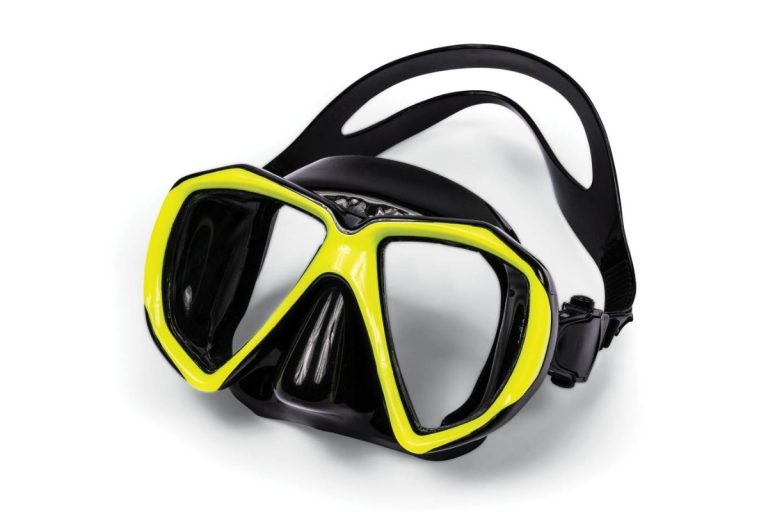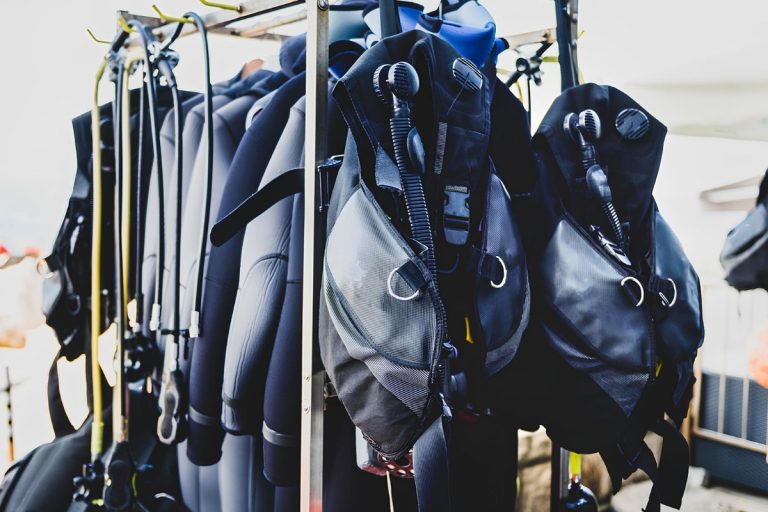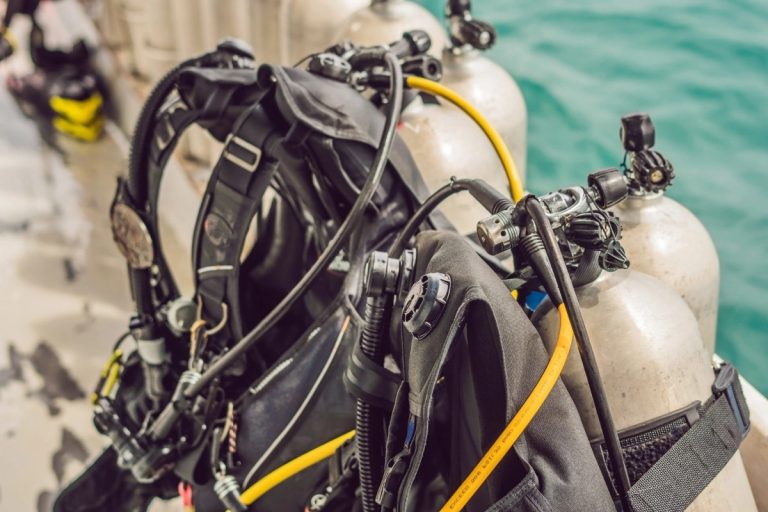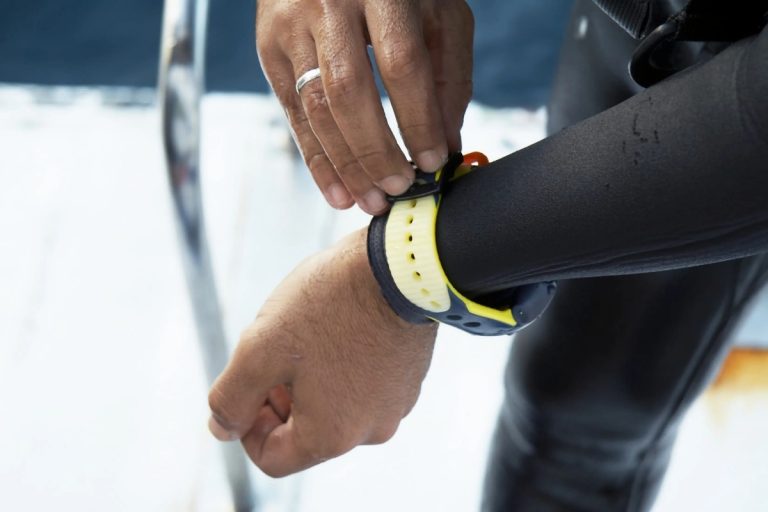- Getting Started with Dry Suits
- Understanding Drysuit Materials
- The Importance of Proper Sizing
- Drysuit Undergarments Explained
- Key Features of Drysuits
- Selecting the Right Drysuit
- Maintenance and Care for Drysuits
- Further Resources and Advanced Topics
- Frequently Asked Questions
- Navigating the World of Dry Suit Diving
Getting Started with Dry Suits
Dry suits represent a significant step up from traditional wetsuits, offering complete protection from water infiltration while maintaining your body temperature in challenging conditions. Unlike wetsuits that allow a thin layer of water to warm against your skin, dry suits create a sealed environment that keeps you completely dry throughout your dive.
The primary purpose of a dry suit extends beyond simple comfort. These specialized garments enable divers to explore colder waters for extended periods, opening up diving opportunities in temperate and polar regions that would otherwise be uncomfortable or dangerous. Professional divers, underwater photographers, and technical divers particularly benefit from the extended bottom times and reduced thermal stress that dry suits provide.
Understanding how dry suits work involves grasping the concept of air space management. The suit creates an insulating layer of air around your body, which you can adjust using inflator and deflator valves. This air space, combined with appropriate undergarments, maintains your core temperature even in water temperatures that would quickly lead to hypothermia in a wetsuit.
Purpose of Dry Suits
The fundamental purpose of dry suits centers on thermal protection and extended dive capabilities. When water temperatures drop below 60°F (15°C), even thick wetsuits struggle to provide adequate warmth for longer dives. Dry suits solve this problem by eliminating water contact entirely, allowing your body to maintain its natural temperature regulation.
Beyond thermal protection, dry suits offer enhanced buoyancy control options. The ability to add or vent air from the suit provides an additional tool for achieving neutral buoyancy, particularly useful in technical diving scenarios where precise control is essential.
Key Materials Used in Construction
Modern dry suit construction relies on three primary material categories, each offering distinct advantages. Neoprene dry suits provide inherent insulation through the material’s cellular structure, making them popular among recreational divers in moderately cold conditions. These suits offer good flexibility and require minimal undergarments.
Trilaminate materials combine multiple layers to create lightweight, durable suits that rely entirely on undergarments for insulation. These suits pack smaller, dry faster, and offer excellent durability for frequent use. Rubber dry suits, while heavier, provide exceptional puncture resistance and longevity, making them ideal for commercial diving applications.
Insulation and Temperature Management
Effective temperature management in dry suits depends on the interplay between suit material, undergarments, and air space control. The suit itself acts as a barrier, while undergarments provide the actual insulation. Understanding this relationship helps divers select appropriate combinations for their diving conditions.
Air space management plays a crucial role in comfort and safety. Too much air creates excessive buoyancy and potential suit squeeze during ascent, while too little air can lead to suit compression and reduced insulation effectiveness. Learning to balance air addition and venting becomes second nature with practice.
Understanding Drysuit Materials
Material selection significantly impacts your dry suit’s performance, durability, and suitability for different diving conditions. Each material type offers unique characteristics that make them better suited for specific applications and diving styles. When exploring neoprene types and eco-friendly alternatives, consider how material choice affects both performance and environmental impact.
Neoprene dry suits utilize the same closed-cell foam technology found in wetsuits but in a thicker, more robust construction. The material’s inherent insulation properties mean you can dive with minimal undergarments in moderate conditions. However, neoprene suits tend to be bulkier, take longer to dry, and may compress at depth, affecting their insulation properties.
Trilaminate suits consist of multiple thin layers laminated together, typically including an outer protective layer, a waterproof membrane, and an inner comfort layer. These suits offer excellent puncture resistance while remaining lightweight and quick-drying. The downside is their complete reliance on undergarments for warmth, making proper layering essential.
Neoprene vs. Trilaminate vs. Rubber
Neoprene suits excel in recreational diving scenarios where moderate insulation and flexibility are priorities. The material stretches naturally with body movement, reducing fatigue during longer dives. However, neoprene’s thickness can make precise buoyancy control more challenging, particularly for newer dry suit divers.
Trilaminate suits shine in technical diving applications where packability, quick drying, and precise buoyancy control matter most. Professional divers often prefer trilaminate for its durability and the ability to adjust insulation levels by changing undergarments. The material’s lack of stretch requires more precise sizing.
Rubber dry suits, while less common in recreational diving, offer unmatched durability for commercial applications. These suits resist punctures, cuts, and chemical exposure better than other materials. Their weight and stiffness make them less suitable for recreational diving but ideal for harsh working conditions.
Advantages and Limitations of Each Material
Each material presents distinct trade-offs that influence diving performance and user experience. Neoprene’s primary advantage lies in its built-in insulation and natural stretch, making it forgiving for sizing variations and comfortable for extended wear. The material’s limitations include slower drying times, increased bulk, and potential compression at depth.
Trilaminate materials offer superior packability and versatility through undergarment selection. These suits dry quickly, resist punctures well, and maintain consistent performance across depth ranges. Their main limitation is the complete dependence on undergarments for warmth, requiring careful layering system planning.
Selecting the Right Material for Your Needs
Your diving environment, frequency of use, and personal preferences should guide material selection. Recreational divers in temperate waters often find neoprene suits provide the best balance of warmth, comfort, and ease of use. Those planning diverse diving conditions or frequent travel may prefer trilaminate suits for their versatility.
Consider your physical build and diving style when making material choices. Divers with athletic builds may find trilaminate suits more flattering, while those seeking maximum warmth with minimal undergarments might prefer neoprene. Technical divers almost universally choose trilaminate for its precise buoyancy characteristics.
The Importance of Proper Sizing
Proper dry suit sizing goes far beyond simple comfort considerations, directly impacting safety, thermal efficiency, and diving performance. Unlike wetsuits that rely on compression for insulation, dry suits require careful attention to fit that allows for undergarment layers while maintaining seal integrity. Understanding fit tips for women’s vs. men’s cuts helps ensure optimal performance regardless of body type.
An ill-fitting dry suit can create dangerous situations underwater. Suits that are too tight restrict movement and compress undergarments, reducing their insulation properties. Overly loose suits create excessive air pockets that can lead to uncontrolled buoyancy changes and make swimming more difficult.
The relationship between fit and thermal protection cannot be overstated. Proper sizing ensures even air distribution throughout the suit, preventing cold spots and maintaining consistent insulation. Areas where the suit pulls tight against the body create thermal bridges that conduct heat away from your core.
Custom Fitting Options
Many manufacturers offer custom fitting services that account for individual body measurements and proportions. This process typically involves detailed measurements of torso length, chest, waist, hips, and limb dimensions. Custom fits ensure optimal seal placement and eliminate common problem areas like baggy knees or tight shoulders.
The custom fitting process often includes consultations about intended use, preferred undergarments, and specific feature requirements. This personalized approach results in suits that perform better and last longer than off-the-rack alternatives. While custom suits cost more initially, they often provide better value through improved performance and durability.
Impact of Sizing on Performance
Proper sizing directly affects buoyancy control, one of the most critical aspects of dry suit diving. Correctly fitted suits allow for precise air management, enabling divers to achieve and maintain neutral buoyancy more easily. Poor fit can create air pockets that shift unpredictably, making buoyancy control challenging.
Thermal performance also depends heavily on proper sizing. Well-fitted suits maintain consistent air gaps that trap warm air effectively. Tight areas compress undergarments and create cold spots, while loose areas allow air to migrate, reducing insulation efficiency. The goal is achieving even air distribution throughout the suit.
Common Sizing Mistakes to Avoid
One of the most frequent sizing errors involves choosing suits too small to accommodate adequate undergarments. New dry suit divers often underestimate the bulk of proper thermal layers, resulting in suits that feel comfortable when tried on with minimal clothing but become restrictive with full undergarments.
Another common mistake is focusing solely on torso fit while ignoring limb proportions. Sleeves that are too short can cause seal problems and restrict arm movement, while legs that are too long create excess material that impedes swimming. Proper limb sizing ensures seals sit in the correct positions and don’t shift during diving.
Drysuit Undergarments Explained
Undergarments form the heart of any dry suit thermal system, providing the actual insulation that keeps you warm underwater. Unlike wetsuit systems where the suit material provides insulation, dry suits rely entirely on the air-trapping properties of undergarments to maintain body temperature. Understanding the science behind thermal layering helps optimize warmth while maintaining mobility.
The effectiveness of undergarments depends on their ability to trap air while wicking moisture away from your skin. Even in a perfectly sealed dry suit, your body produces moisture through perspiration and respiration. Quality undergarments manage this moisture while maintaining their insulating properties, preventing the clammy feeling that can develop during longer dives.
Modern undergarment systems often employ multiple layers working together to provide optimal thermal protection. Base layers wick moisture, insulating layers trap air, and sometimes outer layers provide additional protection or compression. This layered approach allows for fine-tuning thermal protection based on water temperature and dive duration.
Types of Undergarments
Base layer undergarments focus on moisture management and comfort against the skin. These garments typically use synthetic materials or merino wool that wick perspiration away from your body while providing a comfortable foundation for additional layers. Quality base layers prevent chafing and hot spots during extended wear.
Insulating undergarments provide the bulk of thermal protection through various technologies. Synthetic fill materials like Thinsulate offer excellent warmth-to-weight ratios and maintain insulation properties when compressed. Down alternatives provide similar performance while being more suitable for the humid environment inside a dry suit.
Full-body undergarments combine base layer and insulating properties in a single garment. These one-piece or two-piece systems simplify the layering process while ensuring consistent coverage. Many divers prefer full-body systems for their convenience and elimination of gaps between separate pieces.
Layering Strategies
Effective layering starts with understanding your personal thermal needs and diving conditions. Conservative approaches involve slightly over-insulating, as it’s easier to vent excess heat than to generate warmth once you’re cold. Consider factors like water temperature, dive duration, activity level, and personal cold tolerance when planning layers.
The base layer should fit snugly without being restrictive, providing moisture management and a smooth foundation for additional layers. Insulating layers should be loose enough to trap air effectively but not so loose that they bunch up or create pressure points inside the suit.
Extremity warming deserves special attention in layering strategies. Hands and feet lose heat rapidly, so quality gloves, boots, and sometimes heated elements become essential in colder conditions. Some divers use chemical heat packs in boots or gloves for additional warmth during longer exposures.
Materials for Warmth and Comfort
Synthetic insulation materials dominate modern undergarment construction due to their performance characteristics in humid environments. Materials like Thinsulate, Primaloft, and proprietary synthetic fills maintain their loft and insulating properties even when slightly damp from perspiration.
Natural materials like merino wool excel in base layer applications due to their moisture-wicking properties and natural odor resistance. Wool maintains some insulating ability even when wet and feels comfortable against the skin during extended wear. However, wool can be bulkier than synthetic alternatives.
Fabric construction affects both thermal performance and durability. Knit materials offer stretch and comfort but may be less durable than woven fabrics. Some manufacturers combine different fabric types in strategic areas, using stretch panels for mobility and more robust materials in high-wear zones.
Key Features of Drysuits
Modern dry suits incorporate numerous features designed to enhance safety, comfort, and functionality underwater. Understanding these features helps divers make informed decisions about which options best suit their diving style and conditions. The integration of valves, seals, and optional accessories can significantly impact the suit’s performance and user experience.
Inflator and deflator valves represent the most critical functional features of any dry suit. These valves allow divers to manage the air space inside the suit, maintaining proper buoyancy and preventing suit squeeze during depth changes. Quality valves operate smoothly even in cold conditions and resist clogging from debris or salt buildup.
The placement and design of valves affect both functionality and comfort. Inflator valves typically mount on the chest for easy access, while deflator valves are positioned on the shoulder or upper arm where they can vent air effectively during ascent. Some suits offer multiple deflator valve positions to accommodate different diving positions.
Seals: Neoprene, Latex, and Silicone
Wrist and neck seals form the primary barrier preventing water entry into the dry suit. Latex seals offer excellent flexibility and create very effective water barriers when properly sized and maintained. However, latex degrades over time and can cause allergic reactions in some divers, requiring careful maintenance and eventual replacement.
Neoprene seals provide durability and comfort advantages over latex, particularly for divers with latex sensitivities. These seals stretch more gradually and feel more comfortable during extended wear. However, neoprene seals may not create as tight a seal as latex and can be more difficult to don and doff.
Silicone seals represent the newest technology in dry suit sealing systems. These seals offer excellent durability, resist degradation from ozone and UV exposure, and provide comfortable wear characteristics. Silicone seals cost more initially but often last significantly longer than latex alternatives.
Importance of Good Seals
Seal integrity directly impacts both safety and comfort during dry suit diving. Even small leaks can lead to significant heat loss and potential hypothermia in cold water conditions. Good seals maintain their flexibility and sealing properties across a wide temperature range, ensuring consistent performance in various conditions.
Proper seal maintenance extends their lifespan and maintains effectiveness. Regular inspection for nicks, tears, or degradation helps identify potential problems before they cause leaks. Appropriate storage and cleaning techniques prevent premature seal failure and maintain flexibility.
The psychological aspect of seal confidence cannot be underestimated. Divers who trust their seals can focus on enjoying their dive rather than worrying about potential leaks. This confidence comes from using quality seals, maintaining them properly, and having backup plans for seal failures.
Optional Features: Pockets and Kneepads
Cargo pockets provide convenient storage for essential diving accessories like cutting tools, signaling devices, or backup equipment. Pocket placement affects both accessibility and streamlining, with thigh pockets offering good access while maintaining a relatively streamlined profile. Some suits offer removable pocket systems for versatility.
Reinforced knees and seat areas extend suit life in high-wear applications. These reinforcements typically use heavier material or additional layers in areas prone to abrasion from crawling, kneeling, or contact with rough surfaces. Technical divers and those diving in environments with sharp objects particularly benefit from these reinforcements.
Integrated hoods eliminate the need for separate hood systems while ensuring perfect seal integration. However, integrated hoods limit versatility and can make suit maintenance more complex. Removable hood systems offer more flexibility while still providing good sealing characteristics.
Selecting the Right Drysuit
Choosing the appropriate dry suit involves balancing multiple factors including diving conditions, personal preferences, budget considerations, and intended use patterns. The decision process should account for both current diving activities and potential future needs, as quality dry suits represent significant investments that should serve divers for many years.
Local diving conditions heavily influence suit selection, but many divers benefit from considering suits that can handle a range of conditions. Water temperatures, typical dive durations, and environmental factors like currents or rough entries all impact the ideal suit characteristics for your diving.
Professional consultation during the selection process can prevent costly mistakes and ensure optimal fit and feature selection. Experienced dive shop professionals understand how different suits perform in local conditions and can guide decisions based on your specific needs and diving style.
Consider Local Diving Conditions
Water temperature ranges in your primary diving locations should guide material and thickness decisions. Areas with consistent cold conditions may favor neoprene suits for their built-in insulation, while locations with varying temperatures might benefit from trilaminate suits with adjustable undergarment systems.
Environmental factors beyond temperature affect suit selection. Areas with sharp rocks, coral, or debris favor suits with reinforced materials and protective features. Diving from boats versus shore entries may influence valve placement and overall suit design preferences.
Seasonal variations in diving conditions suggest suits capable of handling temperature ranges rather than optimizing for specific conditions. Versatile suits with good undergarment compatibility can adapt to changing conditions throughout the diving season.
Consulting Professionals for Fit
Professional fitting services ensure proper seal placement and overall suit geometry. Experienced fitters understand how different body types interact with various suit designs and can recommend modifications or alternatives that improve fit and performance.
The fitting process should include trying on suits with appropriate undergarments to ensure realistic fit assessment. Many fitting problems only become apparent when wearing full thermal layers, making this step essential for proper suit selection.
Professional advice extends beyond simple sizing to include feature selection, maintenance requirements, and accessories that complement your chosen suit. This comprehensive approach helps ensure your dry suit system works effectively as an integrated whole.
Personal Preferences and Comfort
Individual comfort preferences significantly impact dry suit satisfaction and diving enjoyment. Some divers prefer the security of built-in insulation, while others enjoy the versatility of changeable undergarment systems. Understanding your preferences helps narrow the selection process.
Physical considerations like joint flexibility, temperature sensitivity, and any medical conditions should influence suit selection. Divers with circulation issues might need different insulation strategies than those who naturally run warm.
Budget considerations should account for the total system cost including undergarments, accessories, and maintenance requirements. While initial suit cost is important, the overall investment in a complete dry suit system provides better value comparison between options.
Maintenance and Care for Drysuits
Proper maintenance extends dry suit life significantly while ensuring reliable performance when you need it most. Understanding maintenance requirements helps prevent expensive repairs and dangerous equipment failures. When learning about repairing tears and leaks and how to properly care for neoprene, remember that prevention through good maintenance practices proves far more effective than reactive repairs.
Regular maintenance routines should become automatic after every diving session. Fresh water rinsing removes salt, chlorine, and other contaminants that can degrade suit materials over time. Proper drying prevents mold and mildew growth while maintaining material flexibility and strength.
Storage practices significantly impact suit longevity and performance. Improper storage can cause permanent damage to seals, zippers, and suit materials that may not become apparent until the suit fails underwater. Developing good storage habits protects your investment and ensures reliable performance.
Rinsing and Cleaning Techniques
Thorough rinsing with fresh water should occur after every dive, paying particular attention to zippers, valves, and seals. Salt crystals can jam zippers and damage valve mechanisms if allowed to dry in place. Warm water helps dissolve salt more effectively than cold water.
Periodic deep cleaning with appropriate cleaners removes oils, sunscreen, and other contaminants that fresh water alone cannot eliminate. Specialized dry suit cleaners are formulated to clean effectively without damaging suit materials or seals. Avoid household detergents that may contain chemicals harmful to rubber and synthetic materials.
Zipper maintenance requires special attention as these components are expensive to replace and critical for suit function. Regular lubrication with appropriate zipper wax or lubricant keeps zippers operating smoothly and prevents corrosion of metal components.
Storage Tips for Longevity
Proper storage begins with ensuring the suit is completely dry before putting it away. Even small amounts of trapped moisture can lead to mold, mildew, and material degradation over time. Pay particular attention to areas like boots and pockets where water can collect.
Hanging storage works best for most dry suits, using padded hangers that distribute weight evenly and prevent stress concentrations. Avoid folding suits for long-term storage as creases can weaken materials and cause premature failure. Store suits in cool, dry locations away from direct sunlight and ozone sources.
Seal care during storage prevents premature aging and maintains flexibility. Some divers apply seal conditioners to prevent cracking and maintain suppleness. Avoid storing suits in areas with temperature extremes or high ozone concentrations like near electric motors.
Common Maintenance Issues
Zipper problems represent the most frequent maintenance issue with dry suits. Regular cleaning and lubrication prevent most zipper failures, but damaged zippers require prompt professional repair to prevent complete failure. Learning to recognize early signs of zipper wear helps prevent catastrophic failures.
Seal degradation occurs gradually and may not be immediately obvious. Regular inspection for small nicks, tears, or areas of thinning helps identify seals needing replacement before they fail completely. Keeping spare seals and knowing how to replace them can prevent missed diving opportunities.
Valve maintenance prevents the frustrating experience of stuck or leaking valves underwater. Regular operation and cleaning keep valves functioning properly, while periodic service by qualified technicians ensures internal components remain in good condition.
Further Resources and Advanced Topics
Expanding your dry suit knowledge beyond basic fitting and operation opens up new diving opportunities and enhances safety in challenging conditions. Advanced topics include specialized valve systems, heated undergarments, and integration with other technical diving equipment. Understanding these advanced concepts helps divers make informed decisions about equipment upgrades and specialized applications.
The relationship between dry suits and other diving equipment becomes particularly important in technical diving applications. Proper integration with buoyancy control devices, weighting systems, and breathing gas supplies requires careful planning and often specialized training to execute safely.
Environmental considerations increasingly influence equipment choices, with many divers seeking sustainable options that minimize ecological impact. Understanding the environmental implications of different materials and manufacturing processes helps make responsible equipment decisions. When considering wetsuit thickness recommendations for Hong Kong or other regional considerations, remember that local environmental conditions should guide equipment choices.
Additional Reading on Drysuits
Technical diving publications provide in-depth coverage of advanced dry suit applications and techniques. These resources often cover topics like dry suit diving in overhead environments, extreme cold water applications, and integration with rebreather systems that require specialized knowledge and training.
Manufacturer technical manuals provide detailed information about specific suit features, maintenance procedures, and troubleshooting guides. These resources prove invaluable for understanding your specific equipment and maintaining it properly throughout its service life.
Related Gear: Wetsuits and Bodysuits
Understanding the relationship between dry suits and other thermal protection options helps divers choose appropriate equipment for different conditions. Some diving scenarios benefit from hybrid approaches or backup thermal protection systems that combine different technologies.
Accessory equipment like heated undergarments, specialized gloves, and boots can significantly enhance dry suit performance in extreme conditions. These accessories often require additional training and safety considerations but can extend diving capabilities into previously inaccessible environments.
Courses and Certifications for Divers
Formal dry suit training provides essential skills for safe and enjoyable dry suit diving. These courses cover buoyancy control techniques, emergency procedures, and maintenance requirements that are critical for dry suit diving safety. Many diving accidents involving dry suits result from inadequate training rather than equipment failures.
Advanced certifications in technical diving, ice diving, or other specialized applications build upon basic dry suit skills to enable safe diving in challenging environments. These courses provide the knowledge and skills necessary to use dry suits effectively in demanding conditions while maintaining appropriate safety margins.
Frequently Asked Questions
What is the primary purpose of a dry suit?
The primary purpose of a dry suit is to provide thermal protection and allow divers to explore colder waters for extended periods without water infiltration.
What materials are commonly used in dry suits?
Common materials include neoprene, trilaminate, and rubber, each offering distinct advantages in terms of insulation, durability, and flexibility.
Why is proper sizing important for dry suits?
Proper sizing is critical for safety and thermal efficiency, as an ill-fitting suit can restrict movement, reduce insulation, and lead to buoyancy issues.
How should dry suits be maintained?
Dry suits should be rinsed with fresh water after each dive, cleaned periodically, and stored properly to extend their lifespan and ensure reliable performance.
What are the advantages of custom fitting a dry suit?
Custom fitting allows for optimal seal placement and fit, improving performance and comfort by accounting for individual body measurements and preferences.
Navigating the World of Dry Suit Diving
Understanding the intricacies of dry suits, from their materials to maintenance, enhances not only your diving experience but also your safety and comfort underwater. As you select and care for your dry suit, consider how each element contributes to your overall performance and enjoyment in various diving environments.






